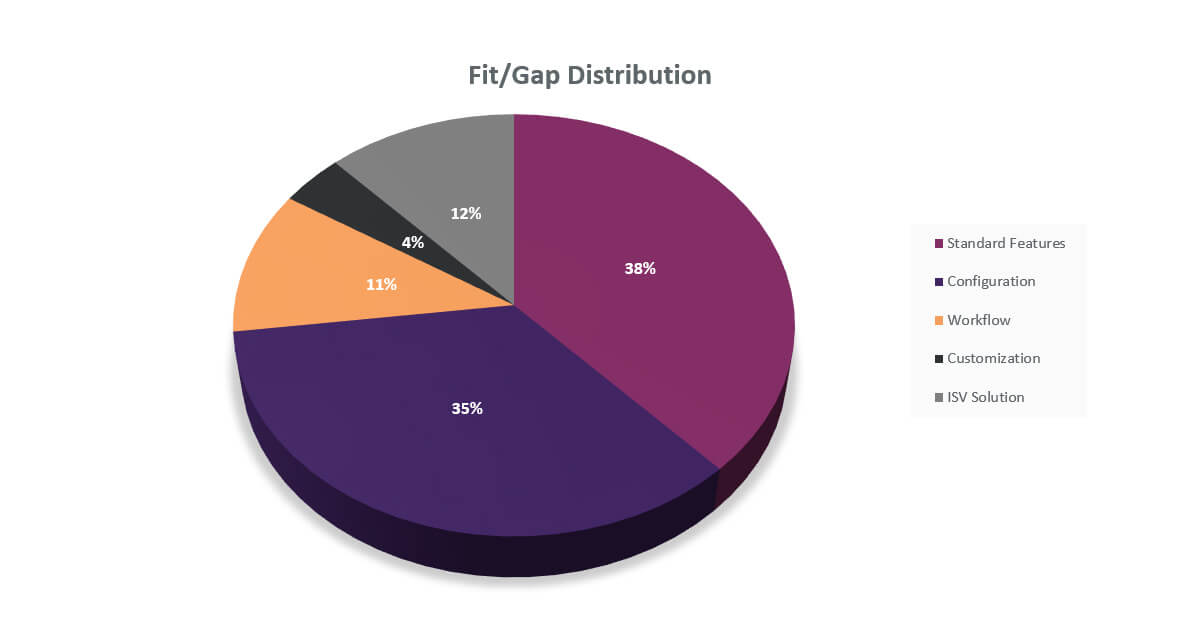Thinking about implementing CRM, ERP, HRM, or other technology, and need guidance on how to start?
Want guidance on how to use complex systems properly and realize rapid ROI?
Choosing the right technology for you can feel quite overwhelming. With diverse options available, each with a distinct array of features, how can you identify the appropriate one for you to drive sustainable change and ensure user adoption?
We have a model of 3 levels of digital transformation:
- Digitalising paper-based systems
- Driving efficiency (where most people are)
- Digital-first: data-driven insights that re-shape the business and even possibly the purpose of the business
So, recognise where you are and how far you want to go, and when.
Read on to learn how you can manage a successful digital transformation journey.
1. Focus on your needs, business priorities, and outcomes!

This sounds obvious but, it needs a process and a steely commitment.
Many of our clients have “ambition” or feel “the pain” of their existing systems and processes. But moving from the current way of working to designing a new target operating model is a big leap.
Often companies have not reviewed their processes for many a long year; activities are done through history and practice, they may have limited purpose and are not as efficient as they should and could be. We are all working flat out on business as usual, so analysing, reviewing, designing, and planning for a new, better world often gets pushed down the list of priorities.
Equally, when clients do have time, they are not practiced in the processes necessary to analyse, review, design, and plan.
As well as using a proven methodology, the other key is the focus- to not get distracted, disappear down the rabbit hole, allow project creep, or get driven by the technology rather than the outcomes.
2. Bridging the gaps between people, process, and technology with ‘Business Process Mapping’

With technology evolving at a rate of knots and businesses evolving too, it is important to take a step back and review your business processes. Especially if you are looking to implement new business enablement technology. For many of our clients, people and processes need a lot of reviewing and planning. The good news is that the knowledge exists within your company’s teams, it just needs proper mapping and refining.
Before making decisions on where to invest, we encourage your company to undergo Business Process Mapping (BPM). Map out workflows, examine current pain points with managers across your company, and identify areas that need improvement. This will help to create a digital transformation roadmap that addresses your goals and challenges. BPM will also help you set priorities, so you can take a phased approach rather than bombard your company with several projects at once.
So, what can be useful is a full discovery process of requirements and an end-to-end business process review. This will identify gaps in your organisation that new processes can address, remove unnecessary processes, and likewise, create new processes.
There are numerous benefits of BPM, as it helps to drive operational excellence, identifies, and mitigates risks within the process, and gives a snapshot of your business to enable continuous improvement.
Overall, Business Process Mapping will help you to recognise the “as-is” and “could-be” differences, gather business requirements, and create a solid foundation for successful technology implementation.
3. Technology Fit- Selecting the right tool for the job

If you fail to select the best-fit technology for your organisation, your digital transformation journey might cost you more time, money, and productivity. Spending a little bit of time upfront now choosing the right product can potentially benefit you in the future.
The CRM marketplace is evolving rapidly, and it can be difficult to understand which products will best support your organisation’s vision, goals, and challenges both today and tomorrow.
The key is to get proper insights on the dos and don’ts of procuring a system.
Unbiased guidance on the ‘pros’ and ‘cons’ of the market-leading products can be invaluable in helping you understand the total cost of ownership, hidden costs, configurability, product roadmap, future roadmap, and user adoption.
Likewise, you can minimise the long-term cost of ownership by choosing carefully how you design and align your processes to your chosen product.
Conducting a proper fit-gap analysis of the best-fit solution often requires expertise and in-depth knowledge of the market-leading products.
Besides, the fit-gap analysis is usually undertaken once business process workshops have been completed and functional requirements have been gathered. This will determine what business application platform will provide the greatest level of fit with ‘out of box’ functionality, and what areas of functionality within the platform can be used to meet the requirements.
In this phase, you must understand:
- which product(s) best meets your requirements
- see what areas of functionality from each product will be used and the different options available (there are often multiple ways to achieve an objective)
- accurate and competitive implementation costs
- accurate delivery timescales
- understanding of the 3–5-year cost of ownership
- understanding of the user licenses required
4. The Importance of Future-Proofing for successful digital transformation

Digital transformation isn’t simply about adopting new technology and calling it a day. Rather, it is a holistic endeavour.
You surely would not want to invest in new technology only to discover in a short while that it is not scalable or is no longer supported. So, what you need is a well invested, flexible, and scalable solution.
- Scalability and size through the cloud
Cloud technologies are scalable, as you grow and change, you can add users & modules, work mobile, and more. Cloud is agile and can scale along with your business– steering you to stay ahead of the competition.
- Flexibility
Likewise, any technology that you put in place should also be flexible. The market leading platforms are well invested, continually evolving with multiple releases a year, and powerful; designed to meet the needs of a large number of varied organisations.
You can get flexibility from Apps as well – as they make your business systems smart! The creation of mobile apps has evolved so much that you can now realise the functionality you have always wanted in a quick time and at super affordable costs.
Enhancing your business activities using Apps offers flexibility without making your overall system architecture more complicated. Apps are the quick and simple option to deliver you the solutions you have always craved, and they are changing the face of business. Apps are becoming more prevalent and offer: More system functionality, greater user engagement, and slicker usability, clear productivity benefits, and easier capture of data and insight.
And this is all part of the strategy of the leading platforms. They provide the technology so Apps can be developed quickly, plus integrate naturally within the core application.
Check out our Sirius Apps website to get a sneak peek of how apps enhance complex systems or see if any app is relevant for your business.
- Integrations
Today, when everything must connect, working with siloed systems will only result in time wasted in manual processes, duplicate data, and insufficient reporting.
Integration unites you into one system, increases efficiency, reduces errors, and produces a slick fast-moving empowered machine. Moreover, integration also gives you more powerful data, which in turn develops insights, creates step change, & drives competitive advantage.
Two such solutions worth exploring are Salesforce and Microsoft Dynamics 365– which are market leaders, backed by multi-million-pound investments.
What’s Next
If you fail to develop an effective strategy, your digital transformation journey might cost you time, money, and productivity. The good news: there are tested principles and successful approaches that Dogma Group has been following and helping companies jumpstart their digital transformation journey. Many leading companies have sought after Dogma’s team of expert advisors to integrate and implement best-fit solutions and have reinvented their business to new levels. Get more details by exploring all client stories.






